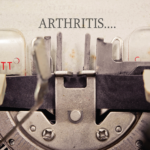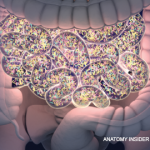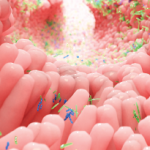This study affirms that dysbiosis is a feature of rheumatoid arthritis (RA) and suggests that specific therapies may differentially modulate the gastrointestinal microbiota in RA.
Search results for: intestinal dysbiosis

Dysbiosis of Gut, But Not Ocular Microbiome, Associated with Sjögren’s Syndrome
Research has explored the connection between Sjögren’s syndrome and intestinal dysbiosis associated with ocular mucosal disease. A recent study found that oral antibiotics and desiccating stress lead to extreme changes in the gut microbiota in mice. In patients with Sjögren’s syndrome, researchers found that patients with the most severe keratoconjunctivitis sicca and combined systemic and ocular disease had the lowest diversity of stool microbiota…
Fungal Microbiota Dysbiosis Seen in Inflammatory Bowel Disease
NEW YORK (Reuters Health)—Patients with inflammatory bowel disease (IBD) show imbalance in their fungal intestinal microbiota, according to new findings. “The fungal microbiota is a new actor to take into account in the pathogenesis of IBD and potentially in other diseases,” Dr. Harry Sokol of Hospital Saint-Antoine in Paris, an author of the new study,…

Gut Microbiota Directly Affects Inflammatory Arthritis
Gut microbiota may provide insight into important environmental triggers for autoimmune diseases. New research in mice indicates that intestinal dysbiosis triggers a mucosal immune response that stimulates T and B cells, which are critical to the development of inflammatory arthritis…

New Tech Provides Insights Into the Pathogenesis of Psoriatic Arthritis
The etiology of psoriatic arthritis (PsA) is poorly understood but current evidence supports an interaction between genetic and environmental factors that coalesce to promote local tissue inflammation.1-3 The pivotal cytokines that underlie the local inflammatory response in a wide range of tissues are interleukin (IL) 23, IL-17 and tumor necrosis factor (TNF).4 The central contribution…

Looking to Psoriatic Arthritis History to Disrupt Current Thinking
As the cloud moved away from the tent, Miriam’s skin suddenly became diseased, as white as snow. When Aaron turned toward her, he saw that she was diseased. —Numbers 12:10 For 29 years he [Fray Pedro de Urraca] was afflicted by … pain, suffering it at once in all the joints of his body, with…

The Effects of IL-17A Inhibitors on the Microbiota
The use of an interleukin (IL) 17A inhibitor resulted in gut microbial dysbiosis and features of subclinical intestinal inflammation in a subgroup of psoriatic arthritis (PsA) and spondyloarthritis (SpA) patients, according to a multidisciplinary, collaborative study across several institutions published in Arthritis & Rheumatology.1 Understanding the downstream effects of these perturbations is an important step…

Gut Instinct: Ankylosing Spondylitis & the Microbiome
CHICAGO—At the 2019 ACR State-of-the-Art Clinical Symposium, an annual gathering featuring talks by key opinion leaders on the most salient topics for practicing rheumatologists and healthcare providers, Jose U. Scher, MD, director of the Microbiome Center for Rheumatology and Autoimmunity at NYU Langone Medical Center, New York City, was the featured speaker. In his remarks,…

Probing the Role of Genes & Microbiome in Ankylosing Spondylitis & RA
Researchers know human leukocyte antigen (HLA) molecules affect susceptibility to disease in general, and immunological disease in particular. In the case of ankylosing spondylitis (AS), the risk is primarily associated with HLA-B27, with smaller effects from other HLA alleles. Current thinking is that AS is caused by the presence of a genetically primed host because…

Research Suggests Th17 Cells Have Microbiota-Dependent Role in RA
A growing body of research is elucidating the role of intestinal microbiota in several autoimmune diseases, including rheumatoid arthritis (RA). Research published in December 2018 Arthritis & Rheumatology increases our understanding of the “extent and nature of mucosal immune activation during preclinical arthritis.”1 The research objective, according to the report, was to “dissect intestinal mucosal immune…